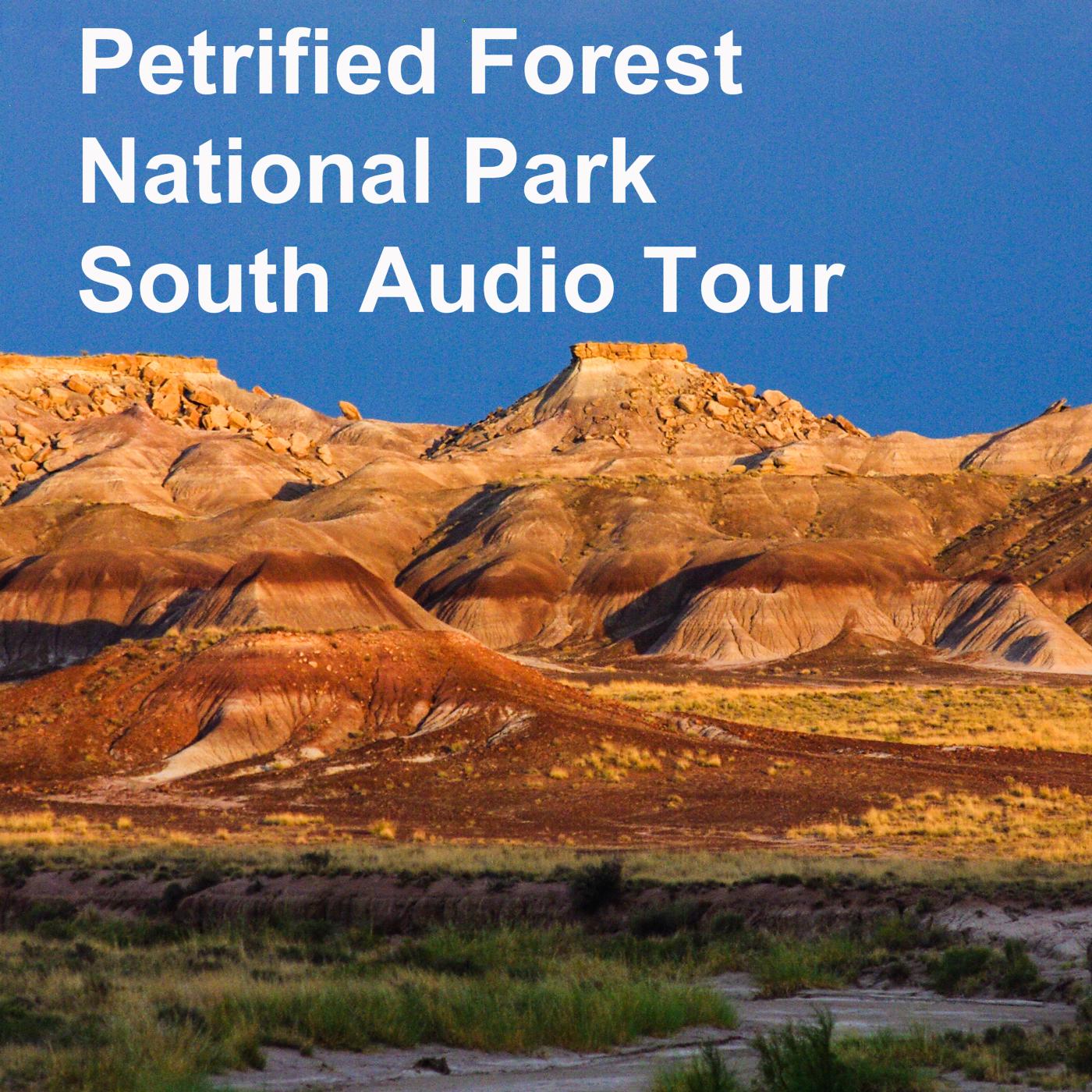Season 2
Episode 1
PEFO Audio Tour South Stop 1
Transcript
Welcome to Petrified Forest National Park originally set aside to protect late Triassic fossil trees. Petrified forest remains one of the most unique parks in the country located in the surreal landscapes of the painted desert region. Petrified Forest is best known for its petrified wood but also preserves and protects millennia of human history. the endangered native Arizonan grassland, dark night skies, and very active research.
This tour will enable you to discover some of the stories of Petrified Forest National Park. There are two versions depending on where you enter the park. One starting on the south off of Highway 180, the other beginning in the north off of Interstate 40. The stops in between remain basically the same merely in reverse order. You have the ability to stop and start this tour at any time while you progress through the tour. Park activities in addition to this audio tour will be suggested, however, you are the ultimate decision maker. Don't worry if your visit doesn't include every suggested activity. Every visitor's motivation for coming to petrified forest is different and whether you hike into the wilderness or not, we're happy you're here.
Different times of year provide different challenges from ice and snow in the winter to heat and dehydration in the summer. Please be prepared for adverse weather and always bring plenty of water. Be sure to take some time to chat with a staff member at either of the two visitor centers to customize your experience based on your needs, interests, and abilities.
Instructions Listen to the audio tour. As you drive through the park, you can stop the tour at any point if you would like to walk a trail or take in the view at an overlook. Please follow the posted speed limits and watch for wildlife crossing the road. There is no removal or disturbing natural and cultural resources in the park whether that's petrified wood, pot shards, flowers, or super cute squirrels.
General welcome and instructions on using the Petrified Forest National Park Audio Tour.
Location: South Entrance

